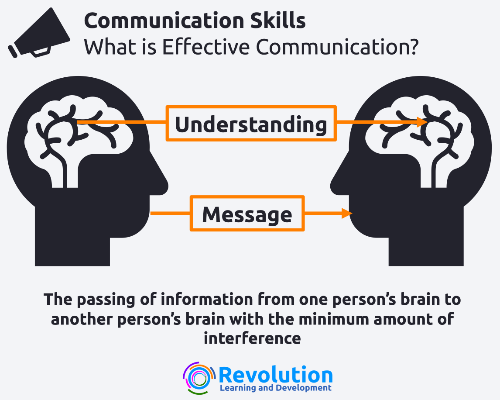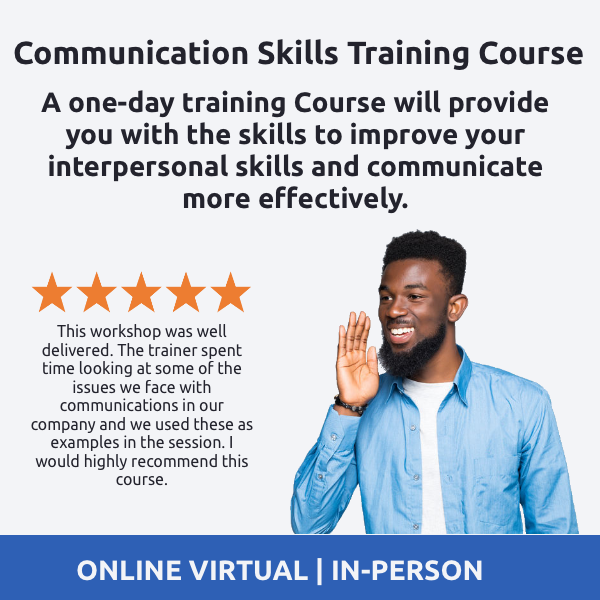What Are Barriers to Effective Communication?
Barriers to effective communication are things that get in the way of our message being received or understood. What we communicate effectively, we should actively work to reduce or better still remove any of these barriers.

The interference in the definition above are barriers to effective communication. In our communication skills training course, we look at these barriers and how to reduce or remove them.
What is Effective Communication?
If we break the definition above down into its parts, this will help us to understand what effective communication is.
- Passing of information – we put together a message in our brain that we want to convey to someone else
- Passing of understanding – we want the recipient to receive and more importantly understand our message
- The minimum amount of interference – we need to reduce or remove any barriers to ensure the message is fully received
Common Barriers to Effective Communication
Here are 7 of the most common barriers to effective communication:
- Poorly constructed message – we haven’t given enough thought to the message and how we are going to communicate it
- No objective – we haven’t thought about what actions we want the person to take or what they should do with the information we provide
- Not enough time – we rush the delivery of the message or the person we are communicating to hasn’t got time to listen
- Wrong communication method – we have used the incorrect method for the message (i.e. used email instead of face to face)
- Not interesting – the message is of no interest or is not relevant to the person we are communicating to
- Language barriers – in multi-cultural organisations, your language may not be the first language of the recipient
- Relationship issues – you and the recipient may not get along and this may influence how we communicate or how the recipient perceives and receives the message
How to Remove or Reduce Barriers to Effective Communication
To ensure our communication is effective, we should consider the following. This will help us to remove some of the barriers to effective communication listed above.
- Have an objective – think about what you want the recipient to do after you have communicated to them, for example, what actions do you want them to take. This will help you to form the message more effectively
- Create time – if the message is important, book out time with the recipient rather than communicating on the fly
- Pick the right method – think about the best way to convey the message, for example, will the understanding be lost if you can’t use body language or you can’t deliver the message in the correct tone? If that is the case, email probably won’t work
- Create interest – make the message interesting for the recipient. Think about the benefits to them. Consider the delivery of the message based on their personality style
- Be articulate – get to the point and don’t use too many unnecessary words. Keep things clear and concise to increase understanding
- Adapt your style – consider what you know about the person with who you are communicating and how you might adapt your style based on their personality. for example, are they detailed orientated, do they prefer short bits of information or do they like pictures/visual communication?
- Check for understanding – don’t be afraid to ask some questions to check that they have understood what you have communicated. For example, “Is that clear” or “do you understand” is not effective enough. Make your questions more specific and based on the information you have communicated.
- Have a communication plan. Plan out who you will communicate to, what you will communicate, how you will communicate and how often you will communicate it. This means that communication is thought through and not forgotten about.
Communication Skills Training Course
You can learn more about barriers to effective communication and how to remove or reduce them by attending our communication skills training course.



